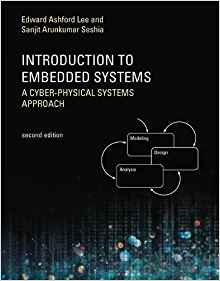Embedded Systems and Cyber-Physical Systems: A Comprehensive Overview
Introduction
Embedded systems are specialized computer systems designed to perform specific tasks within larger devices or systems. They1 are ubiquitous in modern society, found in everything from automobiles to medical devices. Cyber-physical systems (CPS) represent a further evolution, integrating physical components with computational capabilities to create intelligent systems. This white paper explores the fundamental concepts, challenges, and applications of embedded systems and CPS.
Embedded Systems: The Building Blocks
Core Components
- Microcontroller: A specialized integrated circuit that combines a processor, memory, and I/O peripherals.
- Sensors: Devices that measure physical quantities, such as temperature, pressure, or acceleration.
- Actuators: Devices that control physical systems, such as motors, valves, or lights.
- Real-Time Operating System (RTOS): A specialized operating system that ensures timely execution of tasks.
Key Characteristics
- Deterministic Behavior: Predictable and timely response to events.
- Resource Constraints: Limited memory, processing power, and energy.
- Reliability and Safety: High reliability and fault tolerance are critical.
- Real-Time Operation: The ability to respond to events within specific time constraints.
Applications
- Automotive Systems: Engine control units, anti-lock braking systems, and infotainment systems.
- Consumer Electronics: Smart TVs, gaming consoles, and home automation systems.
- Industrial Automation: Robotics, machine control, and process control systems.
- Medical Devices: Pacemakers, insulin pumps, and medical imaging systems.
- Aerospace and Defense: Flight control systems, missile guidance systems, and satellite systems.
Cyber-Physical Systems (CPS)
Definition
CPS are systems that integrate computational and physical components to monitor and control physical processes. They involve the seamless interaction between the cyber and physical worlds.
Key Characteristics
- Networked Systems: CPS often involve interconnected devices that communicate over networks.
- Real-Time Operation: Timely response to events and changes in the physical environment.
- Security and Privacy: Protecting the system from cyberattacks and ensuring data privacy.
- Reliability and Safety: Ensuring the system's reliability and safety to prevent accidents and failures.
Applications
- Smart Grids: Intelligent power grids that optimize energy distribution and consumption.
- Autonomous Vehicles: Self-driving cars and trucks.
- Smart Cities: Urban environments with interconnected devices for efficient resource management.
- Industrial Automation: Advanced manufacturing systems with intelligent machines.
- Healthcare: Remote patient monitoring, telemedicine, and robotic surgery.
Challenges and Future Trends
- Security: Protecting CPS from cyberattacks is a major challenge.
- Reliability: Ensuring the reliability and safety of CPS is crucial.
- Real-Time Performance: Meeting strict timing constraints.
- Interoperability: Enabling seamless communication between different systems and devices.
- Artificial Intelligence and Machine Learning: Integrating AI and ML techniques to improve the intelligence and autonomy of CPS.
Conclusion
Embedded systems and CPS are transforming industries and shaping the future of technology. By understanding the fundamental concepts, challenges, and applications of these systems, engineers can develop innovative solutions that improve our lives.
References:
- Embedded Systems: Architecture, Programming, and Design by Raj Kamal
- Cyber-Physical Systems: The Next Wave of Innovation by Raj Rajkumar, Insup Lee, and Claudio Gomes
- Real-Time Systems: Concepts, Design, and Analysis by C.L. Liu and J.W. Layland
- Introduction to Embedded Systems by Mazidi, Mazidi, and McKinlay
- IEEE Transactions on Cybernetics
- IEEE Transactions on Industrial Informatics
As technology continues to evolve, the integration of embedded systems and CPS will lead to even more exciting and innovative applications. Contact ias-research.om for details.



